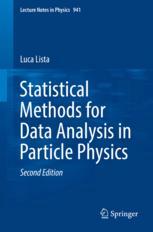

Most ebook files are in PDF format, so you can easily read them using various software such as Foxit Reader or directly on the Google Chrome browser.
Some ebook files are released by publishers in other formats such as .awz, .mobi, .epub, .fb2, etc. You may need to install specific software to read these formats on mobile/PC, such as Calibre.
Please read the tutorial at this link: https://ebookbell.com/faq
We offer FREE conversion to the popular formats you request; however, this may take some time. Therefore, right after payment, please email us, and we will try to provide the service as quickly as possible.
For some exceptional file formats or broken links (if any), please refrain from opening any disputes. Instead, email us first, and we will try to assist within a maximum of 6 hours.
EbookBell Team

4.0
56 reviewsThis concise set of course-based notes provides the reader with the main concepts and tools needed to perform statistical analyses of experimental data, in particular in the field of high-energy physics (HEP).
First, the book provides an introduction to probability theory and basic statistics, mainly intended as a refresher from readers’ advanced undergraduate studies, but also to help them clearly distinguish between the Frequentist and Bayesian approaches and interpretations in subsequent applications. More advanced concepts and applications are gradually introduced, culminating in the chapter on both discoveries and upper limits, as many applications in HEP concern hypothesis testing, where the main goal is often to provide better and better limits so as to eventually be able to distinguish between competing hypotheses, or to rule out some of them altogether.
Many worked-out examples will help newcomers to the field and graduate students alike understand the pitfalls involved in applying theoretical concepts to actual data.
This new second edition significantly expands on the original material, with more background content (e.g. the Markov Chain Monte Carlo method, best linear unbiased estimator), applications (unfolding and regularization procedures, control regions and simultaneous fits, machine learning concepts) and examples (e.g. look-elsewhere effect calculation).